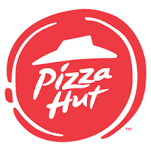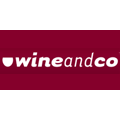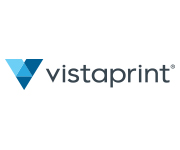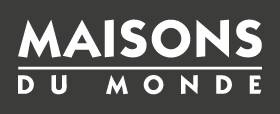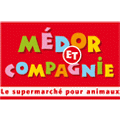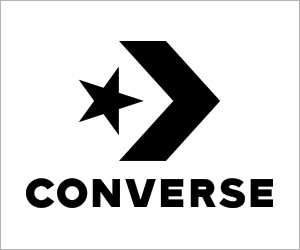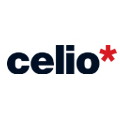Developments in Smart Packaging: Maximizing Consumer Experience and Product or service Integrity
The rapid evolution of smart packaging engineering has revolutionized the way products are packaged, transported, and consumed. These innovations not only boost the consumer experience but also make certain product integrity, offering major benefits across various industrial sectors, including food and beverages, pharmaceutical products, and electronics. This article is exploring the latest advances in clever packaging, highlighting their role throughout improving consumer engagement, stretches shelf life, ensuring safety, in addition to facilitating supply chain operations.
Smart packaging technologies could be broadly categorized into productive packaging, intelligent packaging, along with interactive packaging. Active packing involves materials that control the product to extend its life or improve its good quality. For example , oxygen scavengers and moisture absorbers are traditionally used in food packaging in order to avoid spoilage and maintain freshness. All these materials actively control the inner environment of the package, lowering oxidation and microbial development, which are common causes of meal degradation.
Intelligent packaging, alternatively, incorporates sensors and signals that provide real-time information about the current condition of the product. Temperature-sensitive labels, time-temperature indicators (TTIs), and quality indicators are examples of brilliant packaging that monitor and also communicate the quality and basic safety of perishable goods. In particular, TTIs change color using the cumulative exposure of the product or service to temperature, allowing buyers and retailers to assess whether or not the product has been stored as well as transported under appropriate ailments. This real-time monitoring capability helps prevent the sale of spoiled or unsafe products, thereby enhancing consumer trust as well as satisfaction.
Interactive packaging normally takes consumer engagement to a brand-new level by integrating a digital technologies such as QR limitations, near-field communication (NFC), along with augmented reality (AR). These technologies provide consumers using access to additional product details, usage instructions, and promo content through their touch screen phones or other digital products. For example , scanning a QR code on a package can cause a webpage with detailed information about the product’s origin, dietary content, and sustainability techniques. NFC-enabled packaging allows individuals to tap their cell phones on the package to access online content, such as cooking training or virtual product presentations. AR applications can create impressive experiences by overlaying electronic information onto the real product, enhancing the overall client experience.
One of the significant advantages of smart packaging is it is ability to ensure product honesty and safety. In the pharmaceutic industry, smart packaging remedies such as RFID (radio-frequency identification) tags and tamper-evident features play a crucial role within combating counterfeiting and guaranteeing the authenticity of medications. RFID tags can store specific information about the product, including the manufacturing date, batch range, and expiration date, which is often accessed by scanning the tag. This technology not merely helps verify the reliability of the product but also makes it possible for inventory management and traceability throughout the supply chain. Tamper-evident features, such as seals along with holograms, provide visual tips to consumers, ensuring that the merchandise has not been tampered with or perhaps compromised.
The food and drink industry also benefits from smart packaging innovations that improve product safety and quality. Antimicrobial packaging materials, which usually incorporate natural or synthetic antimicrobial real estate agents, can inhibit the growth regarding bacteria and fungi, reducing the risk of foodborne illnesses. These materials are quite useful for packaging fresh create, meats, and dairy products, exactly where microbial contamination is a significant concern. Additionally , smart wrapping solutions that monitor natural gas levels within the package, such as carbon dioxide and ethylene devices, help maintain the optimal environment for preserving the freshness along with quality of fruits and vegetables throughout storage and transportation.
Vital aspect of smart packaging is usually its role in durability and environmental impact lessen. Advances in biodegradable in addition to compostable materials are dealing the growing concern above plastic waste and air pollution. These materials are designed to improve naturally, reducing the environmental impact of packaging waste. Additionally, smart packaging technologies in which enable precise monitoring in addition to control of product conditions may help reduce food waste by simply extending shelf life and avoiding spoilage. By ensuring that items remain safe and of high quality for longer periods, intelligent packaging contributes to more sustainable consumption patterns and lessens the burden on landfills.
Provide chain management is another location where smart packaging is actually making significant strides. The combination of IoT (Internet of click here Things) technologies and blockchain in packaging solutions enhances traceability, transparency, and effectiveness in the supply chain. IoT-enabled sensors can continuously keep an eye on the conditions of products during transportation, providing real-time data with temperature, humidity, and location. This info can be transmitted to a centralized platform, allowing stakeholders to the movement and reputation of products throughout the supply company. Blockchain technology adds one particular more layer of security simply by creating a tamper-proof digital ledger of all transactions and relationships related to the product. This superior traceability helps identify as well as address issues such as toxins, theft, and counterfeiting, making sure that products reach consumers within optimal condition.
Consumer advantage is another significant benefit of sensible packaging. Resealable and portion-controlled packaging designs cater to contemporary lifestyles, where convenience along with ease of use are highly valued. Like resealable packaging for snack food items and beverages allows shoppers to enjoy the product in many sittings while maintaining its quality. Portion-controlled packaging, which splits products into single-serving devices, helps consumers manage portion sizes and reduce food waste materials. These innovations align with the growing demand for convenient in addition to on-the-go consumption options, maximizing the overall consumer experience.
The integration of smart packaging technological innovation also opens up new chances for marketing and brand difference. Brands can leverage online packaging to create personalized and interesting experiences for consumers. Like packaging with embedded NFC chips can enable buyers to participate in loyalty packages, access exclusive content, or maybe receive personalized offers in addition to discounts. AR applications can establish memorable and immersive brand experiences that resonate together with consumers, fostering brand commitment and differentiation in a cut-throat market.
Advances in clever packaging are transforming the way products are packaged, stored, and consumed, offering numerous benefits for consumers, businesses, along with the environment. By enhancing buyer experience, ensuring product honesty, and promoting sustainability, smart packaging is set to play a crucial role in the future of wrapping solutions. As technology are still evolve, the potential for further innovative developments in smart packaging is definitely vast, promising to deliver sustained value and impact around various industries.










